Fez is a northeastern Moroccan city often referred to as the country’s cultural capital. It’s primarily knew for its Fes El Bali walled medina, with medieval Marinid architecture, vibrant souks and old-world atmosphere.
As one of imperial cities of Morocco it is also knew as the capital of traditional culture. The grand Medrassas (schools)knew as cradles of knowledge are flamboyant symbols, and make Fes one of Morocco’s top attractions.
This fortified city, a UNESCO World Heritage Site, will take you back to the Middle Ages. Located inside the Medina, the entry into the Bab Bou-Jeloud district is via a huge door made in 1913 and adorned with blue and green tiles which are knew as the colors of the city.
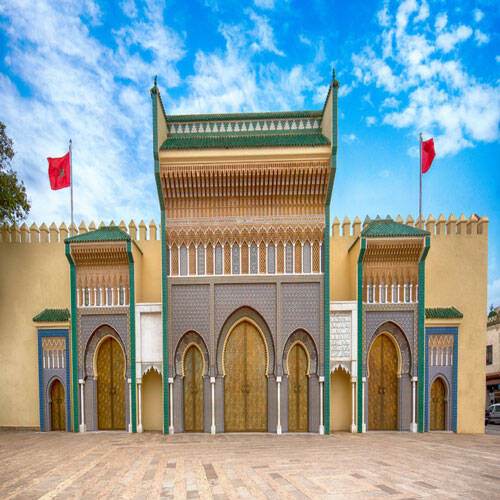
In the morning, your private city guide and driver will pick you up from your hotel or riad and start the tour of the medina ramparts
First, you will start visit Fes El Jadid (14th century section), the Jewish quarter (Mellah), the synagogue or cemetery and the famous gates of the royal palace.
Afterthat, you will continue with your private local guide to the Borj Nord for a panoramic view and end your outside tour in the pottery section. This is where you will visit the artisans making mosaics and tiles.
Then, you will explore the old medina called Fes El Bali (9th century section) with your guide. You will visit the famous Medrassa (Quranschool) of the 14th century, the Quaraouiyine University (the oldest university in the world), the seffarine (bronze) section, the Najjarine (carpenters) Souk, the Nejjarine Fountain and Fondouk, and the mausoleum of MoulayIdriss II, the founder of Fez. You will then visit the well-known leather tanneries followed by lunch in a Moroccan restaurant.
If you wish, after your lunch you can continue the tour for more exploration of the medina.
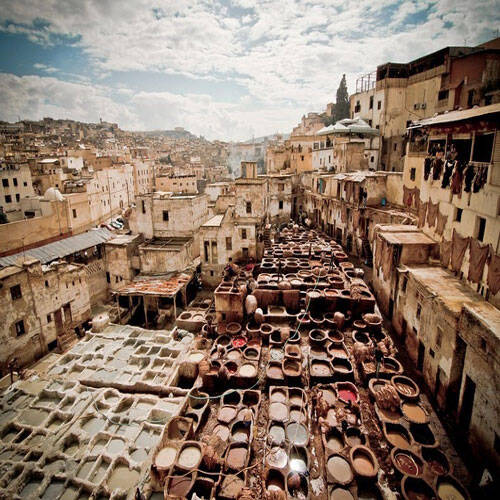
Fez is not only the spiritual heart of Morocco, it is also the artisanal heart. While many of the arts and crafts produced in Fez can be purchased in other parts of the country, they are less expensive and more readily available in Fez.
During this tou your private local guide in Fez will meet you in your Riad or Hotel and start your city tour to explore souks and visit all the shops of handicraft of fez. you will visit souks such as Lihoud souk (Jewish market) where blacksmiths and carpenters do handwork , at this souk we’ll explore woven Berber carpets, rugs carpet with a different design, colors and symbols, and other Moroccan handicraft items made by local Craftsmen.
After you will move to Seffarine Place located near Quarantine university where you can select plenty of chiseled trays, teapots, jars and innumerable other objects.
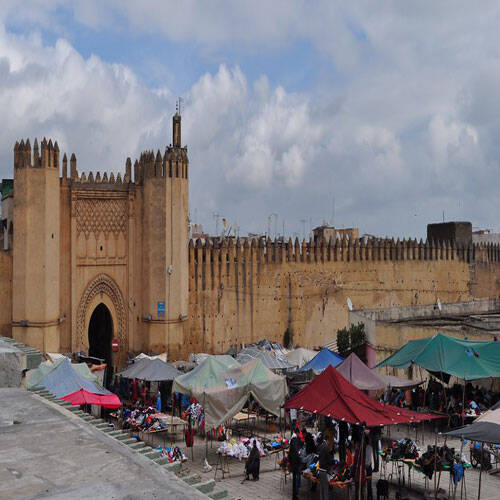
According to your time availability, we will pick you from your hotel or riad straight to the Mellah (jewish quarter). You will visit the jewish cemetery and synagogue and enjoy the moorish architecture of the 14 century. Keep walking to the famous bronze and tile-decorated gates of the 14thcentury royal palace. We continue through Fez el Jadid and the Andalusian gardens.
We will then drive to the Southern Borj for a gorgeous panoramic view of the medina and the whole city of Fez. We continue the drive to the pottery and ceramic quarter where you can watch the complicated and intricate artwork of making mosaic. We end at the Southern Borj (forteresse). Here you can continue to explore the medina or go back to your hotel.
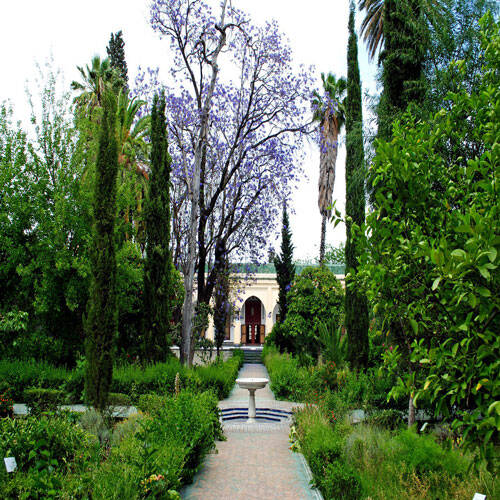
DAR BATHA MUSEUM: The Dar Batha Museum of Fes Morocco was originally a palace built in a Hispanic-Moorish design by Moulay Hassan at the end of the 19th century. The palace belonged to the two Sultans Hassan I and MoulayAbdelaziz.
In 1915 Dar Batha Palace took on the role of providing a home to Moroccan arts and was reinvented as the Dar Batha Museum. If you have an appreciation for art, craft and history, the Dar Batha Museum in Morocco is a must-see attraction. The Dar Batha Museum boasts some of Morocco’s most exquisite collections of antiques, astrolabes, aleju (Fes gold thread), traditional Fassie art works such as embroideries, zellij, sculpted works, jewelry, iron works, Qurans, carpets and ceramics.
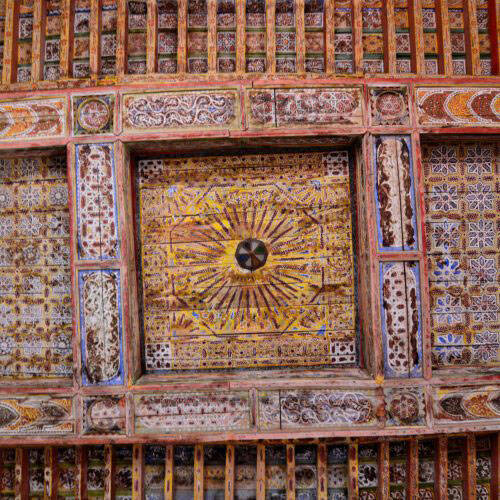
NEJJARINE MUSEUM OF WOOD ARTS AND CRAFT: Fondouk Nejjarine was originally built in the 18th century as a caravanserai (roadside inn) in Fez where travelers could rest before continuing their, journey. These buildings, which are found throughout Morocco, were typically built in a square or rectangular shape around an inner courtyard, usually with a fountain in the middle creating an oasis from the Moroccan heat. Fondouk Nejjarine follows this style, with the two upper floors featuring beautifully carved wooden arches and railings from which visitors can look down upon the courtyard.
Now it is home to the Museum of Wooden Arts and Crafts, or Musée du Bois, located in the same area as Nejjarine Souk . As the name suggests, this museum showcases the skill of woodcarvers and artists both in the embellishments of the building and the intricately decorated items on display. Recognizing the need to preserve this ancient craft and display it to both local and international visitors, Fondouk Nejjarine was declared a national monument in 1916 and underwent extensive restoration work in 1988.
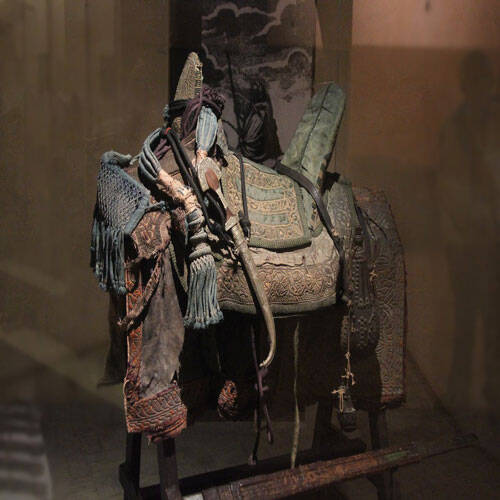
BORJ-NORD WEAPONS MUSEUM: This old XVIth century fortress close to the ramparts remains true to its military historyas it has been transformed into a weapons museum. The collections have been built up mainly as a result of royal donations and include a number of rare pieces. Weapons specialists will appreciate the development of techniques while art lovers will be impressed by the splendour of the objects. Live the golden age of weaponry: everything is on display here, from the prehistoric axe to the modern rifle. And every civilization is represented: Indian, European or Asiatic. However, the finest exhibits are undoubtedly Moroccan. The daggers encrusted with stones to the rifles with their inlaid butts – and there can be no question as to the most imposing piece of all – a canon 5 metres long and weighing 12 tons, used during the Battle of the Three Kings, its size and weight speak volumes!
